"Names for Water" / Kij Johnson
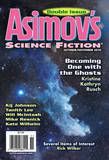 from Asimov’s Science Fiction / Oct-Nov 2010
from Asimov’s Science Fiction / Oct-Nov 2010
Reviewed by: Daniel R. Robichaud
After a quick perusal, Kij Johnson's contribution to the October/November issue of Asimov's Science Fiction might read like an optimistic science fiction vignette. Upon closer examination, however, something far more chilling lies beneath "Names for Water."
The straightforward plot revolves around Hala, a student running late for her Complex Variables class. As this is a course she doubts ever succeeding at, she pauses for a phone call from an UNKNOWN CALLER. She answers only to find a strange hissing sound on the other end. This is not a hissing at all, she realizes, but the sound of crashing surf. What follows is a catalog of oceans and lakes and rivers and cloud types as Hala tries to identify the water's source.
By the story's conclusion, the reader becomes privy to not only the call's uncanny source but to the course of events that stems from this odd event. This contact shapes both Hala's future and humankind's progress for the next couple of hundred years. This sequence invites interpretation. Whether the reader takes it as literal truth or as a student's momentary dream/delusion, the story itself ends on an unsettling note. This is due to Johnson's spare but deliberate prose.
Manifestations of loneliness, death, hopelessness, the alien, and the unknowable fill this story. These bring a manic quality to Hala's mission to identify the caller. Her actions recall those of Ramsey Campbell's obsessive characters or the unnamed narrator from Charlotte Perkins Gilman's "The Yellow Wallpaper."
And how about that ending? Despite the lack of tentacles or conical Yithians, I cannot help but see a nod to Lovecraft's "The Shadow Out of Time" here. Perhaps "Names for Water" is not interested in perceiving the end of the human race, but the flash forward sequence remains both reassuring and eerie.
Purchase the current issue of Asimov’s Science Fiction, containing "Names for Water" by Kij Johnson.
Viator Plus / Lucius Shepard
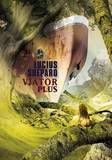 PS Publishing / December 2009
PS Publishing / December 2009
Reviewed by: Jason S. Ridler
Since arriving on the scene in the mid 1980s, Lucius Shepard has written quite a few literate, magical, twisted and often surreal stories, novellas, and several impressive and engaging novels like Softspoken and Handbook of American Prayer. His fiction has roamed from SF to magic realism, from describing in detail the people and landscape of Central and South America to the gritty underworlds of North America and fabled landscapes. In a recent interview I did with him, Shepard referred to himself as an “expatriate writer of exotic tales.” So I find it fitting I read his most recent collection, Viator Plus, beautifully produced by PS Publishing with a wonderful cover by Jim Burns, on buses, planes, and an epic three-hour wait at a Toyota dealership that could have been a JG Ballard play in disguise.
In many ways, Shepard’s work is meant to be read on the move, in places lost in between, and in Viator Plus, Shepard takes us all on exotic journeys through the shifting landscape of his imagination, from punk rock queens to Scandinavian death quests, and all points in between. Unlike some of Shepard’s collections, this one doesn’t weigh a cubic ton, and might be a great way to get new fans interested in a masterful scribe of the lush, dark, and strange.
“The Emperor” was first published at the late, great Sci Fiction. Within a ravaged, environmentally tortured mining planet, a band of unlikely heroes attempt to survive personal and environmental catastrophes through an almost tragic picaresque road story. Grim and desperate action and a dollop of black humor infuse the story’s rich (though bleak) world and environment with humanism amidst the grief.
Like a switchblade, we snap into a completely different vein with “Larissa Miusov”, an unrequited love story involving intoxicating beauty, the lure of Hollywood, and choosing fantasy over reality until reality punches back, hard. No real genre elements here, but it knocked me out and was a fast favorite.
The reader is then treated to two stories featuring the rotten punk rock singer Queen Mother. Both stories – “Carlos Manson Lives” and “Handsome, Winsome Johnny” – appeared in the Polyphony anthologies, and were written under the penname Sally Carteret. According to Shepard, the editors were low on female submissions, so he invented a female penname to go along with these tales of a self-absorbed rock singer whose decadent and self-destructive lifestyle leads her to shimmering moments where reality and the fantastic leach off each other in terrible and compelling ways. Though, the fact that the editors needed an unknown female penname more than that of Lucius Shepard on the table of contents is sad and a bit odd.
With “After Ildiko”, we get a tragic romance based on Shepard’s own misadventures in Guatemala, a river fable of love and loss and the self defeat that makes you wish it wasn’t based on a true story.
The gripping and chilling “Chinandega” is a hunt story where a young man searches for his sister in a corner of Honduras that is both decadent and depraved, and what he finds at the heart of his quest makes me shiver just recalling it.
This reviewer first read “The Ease with Which We Freed the Beast” in Ellen Datlow’s excellent anthology Inferno. And, for me, it was the star story in an amazingly strong collection (though Lee Thomas’s “An Apiary of White Bees” was a close second). It is a tale of rage, of young and unrestrained anger, and how the seduction of power manifests itself and consumes those who play with it. This is perhaps one of the most compelling “angry young man” stories I’ve read where the harshness of the subject matter – and the vitriolic nature of the emotions at play – did not degrade into hyperbole, but created such a strong and terrible world that you felt like you needed a shot of adrenaline after the story was done.
But the dark star of the entire collection is the finale, the novella “Viator.” The original story was published in a cut form, and here we get Shepard’s unvarnished and complete tale of a man whose thread bare existence becomes entwined with an Alaskan salvaging operation aboard a Scandinavian vessel, Viator, that may or may not be alive, may or may not be causing him and the crew to see the world in a surreal light, may or may not be preparing them for a Nordic death quest into parts unknown.
This was an uncomfortable, difficult, and powerful story. Shepard’s talent for description, for mapping the minds of men who are dissolving into the dark recesses of themselves without purchase, for showing the unraveling of human ties in the wake of mental anguish, are at their peak. It is a relentless story of hardship, livened with moments of wild and mythic imagination as rich as any of Shepard’s masters, but the sum total of the experience leaves you wasted. There is an ember of hope in this story, but it is almost going out by the final paragraph. In the story notes at the end of the collection, I was not surprised, but no less sad, to read that the experiences detailed were in some part taken from Shepard’s own descent into clinical depression while writing the original version. While one of the most draining stories I’ve read, I’m glad, as I am sure Shepard is, to have survived the journey.
Lucius Shepard’s work can be, at times, easy to get into but difficult to hold on to. He loves long paragraphs as much as the Russian realists, and his powers of description can lead to beautiful digressions that can shove some readers off the page. But his talent and craft are killer. Perhaps one of the best writers of his generation, in Viator Plus, Lucius Shepard demonstrates the wide arc of his mad skills and it makes for a heady trip. Just be sure to hold on with both hands.
Purchase Viator Plus by Lucius Shepard.
Draculas / Jack Kilborn, F. Paul Wilson, Blake Crouch, and Jeff Strand
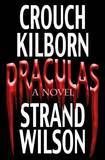 Kindle Edition / October 2010
Kindle Edition / October 2010
Reviewed by: Daniel R. Robichaud
The four-way collaborative novel Draculas begins quietly enough. Dying millionaire Mortimer Moorecook purchases a curiosity, a grotesque skull from Transylvania reputed to belong to Dracula. Soon after receiving it, the millionaire mutilates himself on its enormous fangs and is taken to the hospital. For Moorecook, it is too late; for readers, the fun is only beginning.
After a handful of point of view breaks (there are no chapters per se), the novel ceases its slow setup and hits 100% pure adrenaline. Soon, the isolated hospital is overwhelmed with monsters seeking more blood.
Draculas offers up vampirism as super-efficient, supernatural rabies. The result is a creature with the ethics of piranha in a feeding frenzy and the jaws of a great white shark. A bite is all it takes to unleash the hunger, and every subsequent chomp spreads blood frenzy and physical transformation. Patients make easy victims, but the "draculas" (this novel avoids the v-word) are not picky. They'll lick blood off the floor or, if no other prey is available, turn on one another or even autocannibalize.
The novel is a grisly and gruesome black comedy. It's pure entertainment, a popcorn-style terror story. Those looking for a layered, atmospheric story of ghostly horrors should pass this one by. Draculas aims to replicate the same thrill of attending a good summer blockbuster (or perhaps the most extravagant grind house movie never made) and hits its mark.
The novel is an exercise in survival horror, which echoes the pulse of dozens of flicks from the seventies/eighties (think Cameron's Aliens meets the Lamberto Bava's Demons) as well as the gory excesses of David Morrell's early fiction (Kind of The Totem meets First Blood). We find several characters to root for and several to loathe. Their struggles make for some engaging page . . . turning? As Draculas is a straight to eBook release, I suppose this particular nomenclature needs changing. Page tapping, perhaps?
A large cast of characters fills this novel, and while they can each be boiled down to simple concepts (Moorecook the master monster, Dr. Lanz the pompous ER doctor, Jenny the nurse, Shanna the historian, Clayton the gun nut cop, Randall the lumberjack, Benny the Clown, Oasis the little girl, etcetera), the authors provide plenty of quirks to make these characters come alive at least for the story's duration. Of course, the most interesting are often the monsters, as they deal with their newfound hungers and strengths and find a very personal language for identifying them (personal favorite: a little girl dracula looking for "red candy", which the stingy adults continually deny her).
The four collaborating authors have comparable voices. Readers well-versed in their individual works might be able to pick out the occasional Jeff Strand or F. Paul Wilson sequence in the beginning; however, as the book progresses, the language merges into a seamless whole.
Yet, Draculas isn't perfect. Even when I found myself caught up in the action, the critical part of my mind often wondered about the rules. Why did none of these critters venture terribly far from the hospital? It may be isolated, but surely some of these suckers caught a whiff of the fauna in the surrounding woods. While this might be resolved through Moorecook's unspecified influence over them, the bloodsuckers' rules of activity remain mysterious. Perhaps this shall be explored in a sequel.
Also, despite the novel's intentions, I found my interest waning in the final act (say, the final quarter). Often, attempts to maintain high levels of tension for too long grow tedious, and I found a touch of that here. I was pleased when the conclusion arrived, but the book's final act (wherein the excrement has clogged the proverbial fan's motor, but continues to pile on anyway) got a little long in the draculas' tooth.
As well, the dialogue between the novel's manly men often relies heavily on film references. While this is entertaining in short supply, I found the quantity of nods to Aliens, Dirty Harry, The Thing, and other flicks to grow wearisome. While I also love these movies (heaven knows I often quote films during my day-to-day interactions; likeminded readers undoubtedly spotted my review's nod to Point Break), I don't like to read quite so many. Then again, I also dislike speaking with people who only talk in film references.
One of the pleasing aspects of this work is the sheer quantity of included material, apart from the novel. As J. A. Konrath notes in his introduction, eBooks do not suffer the same shipping and printing concerns as print books, where page count determines a large number of invisible-to-readers costs. Thus, Draculas includes a vast number of bonus features after the novel is complete, making this the literary equivalent of a double disc special edition DVD.
Apart from the novel itself (a sizeable chunk of prose; my iPhone's Kindle app does not tell me page numbers, per se, but at the smallest print size, the novel alone has well over 400 "page turns"), this eBook includes an introduction by J.A. Konrath (aka Jack Kilborn), an interview with the four authors, lengthy email correspondence exchanged during the writing of the book (Warning: Spoilers aplenty!), as well as three short story reprints (early collaborations between J.A. Konrath and each of Draculas' other authors), novel excerpts, bios, deleted scenes, and alternate endings. The additional material amounts to about the same length as the novel itself. To belabor the DVD comparison a little further, this offers plenty of meaty material, not simple afterthought featurettes. Though it is nothing new for Konrath, who provides similar material (including alternate drafts) on his other Jack Kilborn eBook releases, I found these inclusions to be fascinating looks into the creative process. Furthermore, who am I to argue with more fiction from a quartet of talents like this?
The bottom line: Draculas isn't terribly deep. It's not a thoughtful tale of soul-numbing horror. What it is, however, is a monster movie for the mind's eye: an entertaining, thrill-a-minute, blood-drenched story of survival and blackly comic nastiness. Readers looking for exciting fiction need look no further than this. It’s well worth its $2.99 price tag.
Purchase Draculas by Jack Kilborn, F. Paul Wilson, Blake Crouch, and Jeff Strand.
The Passage / Justin Cronin
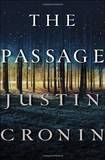 Ballantine Books / June 2010
Ballantine Books / June 2010
Reviewed by: I.E. Lester
Editor's Note: This review contains spoilers.
The US military machine has launched a secret scientific project. (Is there any other kind?) Their aim: To create a breed of unkillable super-soldiers. So they gather the brightest minds, give them an endless supply of equipment and chemicals — and a host of death-row inmates for them to experiment upon. All too soon things start to go predictably wrong. The prisoners – who were offered the chance to take part in the experiment as a way of avoiding execution – are mutated into vampire-like creatures. And they escape.
Thrown in amongst all the chaos is a single element that offers hope to besieged mankind. Amy Bellafonte is a nobody girl, the daughter of a hooker who abandons her at a convent hoping she’d get a better life if raised by the nuns. Her life is going to be nothing of the sort, though, as US government secret agents kidnap her from the convent, delivering her to the project as another test subject. And (once again, predictably) she proves to be the project’s greatest success — although far too late to prevent a world meltdown as the mutated creatures escape.
Two hundred and fifty pages in, everything the book has set up ends. Every character (barring Amy) is dead. To the reader, it’s a little jarring to realize that one-third of the book is, in effect, a prologue. Any investment the reader has made in the characters in Cronin’s fictional world can be set aside. To Cronin’s credit, had the writing not been as strong as it is here, this break may have felt less wrenching.
The action jumps forward a century and changes location to Haven, a fortress populated by the remaining uninfected survivors of the human race. The reader is presented with another batch of characters and a series of back stories, as well as detailed descriptions of the post-apocalyptic world. Then, just as this world is established and you know the day-to-day struggles of the people inhabiting the compound, Amy re-enters the narrative. (You really couldn’t see that coming, could you?) Unfortunately, in this section, the writing style loses a little of the cohesion that made the extended prologue so strong and compelling.
Haven has had a century to evolve, a century of the human race as a prey species struggling to survive. This could have been visualized spectacularly well if the prose had been as sharp as it was in part one. Make no mistake: Cronin hasn’t done a bad job. In fact, if you were to compare his writing to that of many contemporary science-fiction/horror writers, it would easily stand out as superior. It’s just that from the high standard he set in the book’s first third, there’s a definite drop in quality and it all falls a little flat. Things do pick up a little towards the end of the book, but they never truly reach the heights of the first third.
The Passage is a book that could have been great, despite there being little originality at play here whatsoever. Essentially offering up a retread of vampires as a scientific plague, Cronin’s epic will remind readers of other works – Richard Matheson’s I Am Legend comes immediately to mind – and other writers who got there first. 99.9% of humanity wiped out, the remaining fraction seeking to overcome an evil enemy? Sounds like Stephen King’s The Stand. A child (albeit long-lived in this case) proving mankind’s last hope? How many previous examples do you want? Still, there are glimmers of greatness.
There’s quite a bit to enjoy in the pages of The Passage, but maybe just not enough to warrant the effort of reading 750 of them.
Purchase The Passage by Justin Cronin.
A Demon Inside / Rick R. Reed
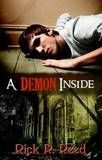 MLR Press / June 2010
MLR Press / June 2010
Reviewed by: Vince A. Liaguno
In this sixteenth novel and fifth with MLR Press, Rick R. Reed gives the traditional ghost story a non-traditional twist with mixed results. Hunter Beaumont makes a deathbed promise to his dying grandmother, the wealthy matriarch of a troubled family line. That promise involves destroying part of his sizable inheritance – a looming old mansion known as Beaumont House buried deep within the Wisconsin woods and sporting a serious gypsy curse. Before you can even conjure the name Shirley Jackson, young master Beaumont – faced with financial problems when the sheltered orphan naively gives away half of his inheritance to a sexy swindler – breaks his promise to dear, deceased Granny Beaumont and sets up shop in the accursed dwelling.
Reed proceeds to throw every haunted house cliché at his hopelessly clueless protagonist — creaking floorboards, opening windows, feelings of being watched, sudden drops in room temperature, levitating furniture, otherworldly laughter, and apparitions. There are ghostly nocturnal visits of the licentious variety to spice things up, as well as a hunky caretaker from a neighboring property who may or may not have something to do with the spookfest that Hunter’s life becomes soon after moving into Beaumont House.
In attempting to fashion Hunter as a compelling gay male version of the classic femme fatale, Reed misfires and ends up with a feeble momma’s boy character who acts more like one of the interchangeable orphan girls from a V.C. Andrews novel. Missed opportunities abound when supporting characters are introduced and developed nicely, only to be unceremoniously dismissed from the narrative early. Only the character of Michael Burt, the aforementioned caretaker and requisite hunk, has any hint of depth as a character, albeit only when Reed pulls back from painting him with broad Marlboro Man strokes.
Structurally, Reed knows his way around a tight-knit suspense tale. His pacing is spot-on 99% of the time (with a deduction of a percentage point for a vexing repetition of meals-that-make-themselves plot device used here) and the action moves along at a decent clip. The explosive finale possesses all of the expected pizzazz of a respectable supernatural thriller.
Reading A Demon Inside is like arriving at the same destination you’ve visited countless times over but approaching it from a slightly different route, and therein lies its ultimate appeal. By all counts, there’s not a shred of innovation to be found in this seemingly by-the-numbers haunted house tale, yet somehow Reed makes it all work and keeps the reader turning the pages. That he can do this even when the material is mediocre is a testament to his skill as a writer. It’s that skill as a writer, though, that has this reviewer wanting more from Reed – something far edgier, something less sanitized, something less safe.
A Demon Inside is more homage than groundbreaking original, with the added appeal of letting all that repressed gay subtext at work in classics like Jackson’s The Haunting of Hill House out to play in full view. Taken as a re-telling of the classic haunted house story, A Demon Inside definitely hits its target, even if it overshoots the bull’s-eye.
Purchase A Demon Inside by Rick R. Reed.
Johnny Halloween: Tales of the Dark Season / Norman Partridge
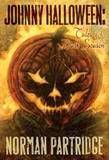 Cemetery Dance / October 2010
Cemetery Dance / October 2010
Reviewed by: Blu Gilliand
Norman Partridge became the King of Halloween with the 2006 release of his novel Dark Harvest, and he solidifies his hold on the crown in 2010 with Johnny Halloween: Tales of the Dark Season, a short All Hallows-themed collection published by Cemetery Dance.
These six stories (plus one essay) span the full length of Partridge’s career thus far, giving readers a glimpse into his growth as a wordsmith while laying bare the way certain touchstones continue to crop up in his work. There are masks, and monsters of both the human and supernatural kind, and people who are trying to rip themselves away from circumstances that hold them in place with an iron grip.
Also evident in the mix is Partridge’s pure love of writing and the things he writes about. This is the work of a guy who gets to play in his favorite sandbox every day, and the joy of storytelling, monsters and mayhem fairly sings off the page.
In “Johnny Halloween” a man’s violent past catches up to him, and it’s wearing a jack-o-lantern mask covering the death’s-head visage underneath. This sudden reappearance forces long-held secrets to the surface, and sets the inevitable consequences of those secrets in violent motion.
In “The Man Who Killed Halloween,” Partridge writes about growing up in Vallejo, California, and how, in 1969, the whole town fell under the shadow of the real-life boogeyman who called himself The Zodiac. It’s a poignant tale of how the serial killer’s spree fundamentally changed not only the lives of those closest to the victims, but everyone living in the small town. Partridge compares the Halloween before The Zodiac’s appearance with the Halloween after, and shows how the innocence and carefree attitude personified on that one night per year had evaporated.
“Three Doors” is a twisted take on “The Monkey’s Paw” featuring a disturbed war veteran and a rubber hand. When the vet paints the hand black it charges him with a strange power – but like most power it’s limited, and need to be used wisely. Unfortunately, the vet is a wounded man in more ways than one, and his decisions are dictated by a lonely, broken heart.
The collection is capped off with “The Jack O’ Lantern: A Dark Harvest Tale,” a prequel to Partridge’s outstanding novel that plucks us right back down in a cold cornfield with the malevolent October Boy as our guide. It’s Halloween night, the October Boy is on the run and the boys of the town are on the hunt. But it seems there’s a new predator on the loose – one that’s already left a bloody trophy at the October Boy’s feet.
This new tale works fine as a standalone introduction to the Dark Harvest world for readers who haven’t experienced Partridge’s previous October Boy tale, but those who’ve already been to this small town will recognize a few characters here, and will immediately understand the ripples of events that take place on this one terrifying night. Like its full-length predecessor, “Jack O’ Lantern” is a brutal tale about people driven by desperation to escape the dead-end life that’s been forced on them. It’s crisply written with a lightening-fast pace and a great atmosphere.
Partridge’s brand of hard-boiled horror is the perfect complement to the Halloween season, just as this collection is the perfect companion piece to Dark Harvest. For maximum enjoyment, it’s recommended that readers partake of these dark tales at the side of a roaring fire, a cup of hot cider in hand and one eye locked on the moonlit shadows coming through the window. There are dark things out there, you see, and Partridge’s writing calls them up and brings them to wretched, cackling life.
Purchase Johnny Halloween: Tales of the Dark Season by Norman Partridge.
Halloween: New Poems / Edited by Al Sarrantonio
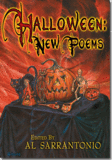 Cemetery Dance / September 2010
Cemetery Dance / September 2010
Reviewed by: Blu Gilliand
Good Halloween stories start with atmosphere. If you can capture those intangibles that all come together to form that unique Halloween feeling – the crispness of the air, the thrill of a night without adult supervision, the smell of a latex mask, the weight of a bag full of candy – then I’m hooked. And even though I’m not much of a poetry reader, I recognize that it’s one of the best vehicles for capturing atmosphere on the printed page. So, when presented with a book of Halloween-themed poetry? Let me at it.
Halloween: New Poems, just out from Cemetery Dance, captures the whole of Halloween by finding the perfect balance of darkness and whimsy. There are poems that address the childlike innocence that is integral to the holiday – the kind of innocence that finds lifelong memories in a few hours of pranks, candy-grabbing and costumes. There are also works here that dig into the sinister sides of All Hallow’s Eve, the aspect of the night sprung from pagan rituals and ancient beliefs. And there are some that are just downright spooky. The standouts include:
James A. Moore’s “They grow pumpkins down there” shifts from a nostalgia-tinged description of a valley where the season’s best pumpkins are grown to, in the space of a single line, a dread-filled cautionary tale for “fools who have forgot their debts.”
“Crossroads, All Hallow’s Eve” examines the barrier between the living and the dead, which (as we all know) is thinnest on Halloween night. Well, almost all of us know this, the exception being the two unfortunate souls who fail to heed the warning signs in Ardath Mayhar’s poem.
“Autumn,” by James A. Moore, uses the hallmarks of the season – dead leaves, shortened days and chilled air – and turns them upside-down so they represent not the coming of a beloved season, but the isolation and desperation of those who have lost everything important to them.
Brian James Freeman’s “Under the Halloween Tree” is a bittersweet portrait of a young boy’s first inkling that time changes everything, even the rituals of a beloved holiday.
Anchoring the book is Bradley Denton’s long-form poem “Cap’n Hook (A Tale of the Prairie),” a classic campfire tale with a well-worn but well-loved twist.
With Halloween: New Poems, editor Al Sarrantonio (who has told a fair Halloween tale or two of his own with his “Orangefield” series) has brought forth 100-plus pages of distilled Autumn magic. Warm up some cider, stoke the fire, and dim the lights – this is one you’ll be pulling off the shelves every October for years to come.
Purchase Halloween: New Poems edited by Al Sarrantonio.




